08: Spooling The Reel
Between The Lines - Ch 02: The Gear
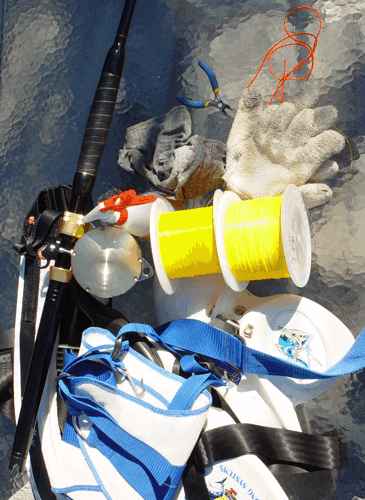 Putting the line on your reels, or spooling up, can be as simple as asking your local tackle shop to do the job for you and is often a free service if you purchase the line to go on it.
Putting the line on your reels, or spooling up, can be as simple as asking your local tackle shop to do the job for you and is often a free service if you purchase the line to go on it.
It can also be a valuable lesson to introduce a novice to the basics of handling and using a game outfit. In many fishing situations the first time an angler gets to feel and use an outfit there's a great big fish on the other end. It's a bit like expecting someone to win a Formula One race when they've never driven a car.
The following exercise will not only result in getting the reels spooled but will also give a better understanding of the tackle and how it, and the angler functions under load. It's also a good way for experienced anglers to get their muscles ready for the season.
In all cases, the line especially when using nylon, should be checked often for wear. It can suffer degradation from exposure to ultraviolet light either from the sun or types of lighting such as fluorescent light. The line should be replaced if it is suspect.
A quick and efficient way of removing the line from a spool is winding it back onto an empty line spool with a long bolt through it, spun on a hand drill.
A quick and efficient way of removing the line from a spool is winding it back onto an empty line spool with a long bolt through it, spun on a hand drill.
The tools you need to spool Stand-Up Outfits
|
||||||||||||||||||||||||
|
Check all rod guides are clean and in good condition and there are no scratches or cracks. If they are rollers ensure they are rolling easily and smoothly using a piece of string or Dacron. This is a good time to service the gear and coat with a light lubricant. |
||||||||||||||||||||||||
|
Thread the rod up by passing the line through the tip and guides. With rollers, the line is threaded on the side of the rollers away from the rod and in between the two rollers of the stripper guide. Tie the line to the spool using a knot such as the Uni Knot.
The hardest part of spooling up is using a system that puts pressure, or drag, on the line that at the same time doesn't introduce friction on the line that burns and weakens it. There are many ways to accomplish this. The line should always come off the side of the spool, not over the top as this will introduce twist into the line. This is most easily achieved by passing a spindle through the spool to rotate on. There are many methods of applying pressure to the line, most of which are fine to use as long as they don't damage the line and keep consistent pressure. In this example, we'll soak the spool in water and apply the pressure with a wet towelling glove for an assistant or the spooler to use. The line is passed over and under the gloved fingers and the pressure adjusted by how hard the gloved hand is clenched. Setting the spooler up with the gimbal and harness has freed their hands to accomplish this without assistance. To start, the angler should relax, feet apart, knees slightly bent, left hand on top of the reel pushing slightly away from the body with fingers free to guide the line so that it lies level across the spool.The spooler should now prepare for the long wind ahead during which adjustments can be made to help increase comfort and staying power by using muscles and movements economically. Each angler interacts differently with the gear so each set-up differs between individuals and is up to what the angler feels most at ease with. The right hand should rest on the reel handle with the wrist pointed out slightly. Just holding it firmly will do - squeezing it will not accomplish anything except a tired hand. There are three main winding positions. |
||||||||||||||||||||||||
|
Firstly, the wrist action using only the hand and wrist, second is a locomotive action using the elbow as a ram and the third using the shoulder to really get some power. Time to start winding. The pressure on the line will make the handle quite hard to wind. The smaller the spool diameter the easier it is to wind against, as the amount of line on the spool increases and the speed of the line coming onto the spool also increases as does the effort of the angler to get it on there. Keep the rod at the same angle, do not pump it to make it easier, the tension on the line should be as constant as possible. There is no doubt this is hard work, but it is good exercise and certainly good experience for a novice. Once there are a few layers of line on the spool, stop winding and pull some line against the drag and make sure the line is on level and tight enough so that it doesn't cut into itself. Also, check the drag is not slipping as the angler winds. If all is well continue spooling up, repeating this check every hundred yards or so. As time passes you'll notice that the spooler will begin to tire and become less comfortable, especially when spooling heavier line classes. Discomfort can be eased by changing the length of the harness straps and height of the gimbal belt. It may even be the case that the gimbal and harness doesn't suit the spooler in which case another set-up may be more practical. The spooler is probably hanging onto the reel handle with a death grip, clenching teeth and even toes. Relax all muscles and use the harness. To get even more comfortable the spooler can move their feet further apart and move toes in or out and lean back slightly to get more load on the harness. Spooling a reel can seem to take a long time, but it is a relatively short period compared to many fights against big fish on light line. This exercise will help make that a much more enjoyable experience. Continue to spool the reel until it has the amount of line you need on it. This can vary, for instance, if you are putting a nylon top shot on a spool full of Dacron and you must allow enough space for it. If a wind-on leader is going to be used then take the space needed into account. If using a full spool of nylon, fill the reel close to the top, however, if inexperienced crew are going to be winding in the gear when the action starts, take into account they may not lay the line evenly and that the line may bunch up and jam or double against the reel housing which can greatly weaken the line. This is certainly the reason for many mystery bust-offs.
- The more line on the reel the higher the speed recovery for each turn of the reel handle. - Half the amount of line is in the top third of the reel. - The lower the lines level on the spool the greater the drag variance in losing more line. - The more line that is on the spool in the first place the more times you can remove the damaged line and redo doubles before re-spooling. Spooling up Chair OutfitsMost commonly, reels used on chair rods are spooled by shops, and if not are otherwise spooled on their rods by putting the rod in a rod holder in a fighting chair or in a gunwale rod holder. There is certainly more pressure applied to heavy tackle line than light tackle, and indeed, it is much harder to wind onto the spool. It is however still a significant advantage to set up a novice angler in the chair with a chair harness and get them to wind on the line, as with the stand-up gear. It is a valuable lesson in getting the chair and seat harness set up for the comfort of the angler. At this stage, we have accomplished two things, filled a reel or two with line and increased the spooler's ability and confidence in handling an outfit. Unknowingly, we have also started to adopt an uncommon concept in game and sportfishing of practising aspects of the sport to increase enjoyment and satisfaction when the action starts. The purpose of describing these exercises is for you to physically do them, not just read about them. That would be like reading about driving that Formula One car and expecting to win the race. You should get in and start your engine! By the time you have read this CD, you'll be ready, but only if you do the exercises often enough to make the many aspects involved second nature. |






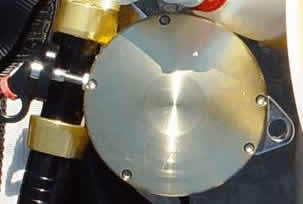
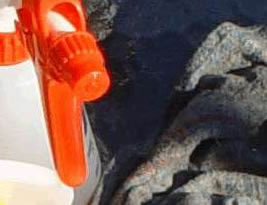
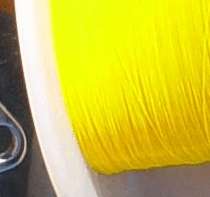

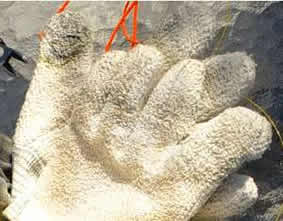
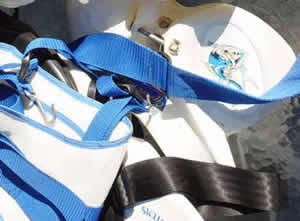
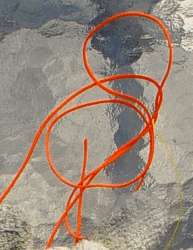
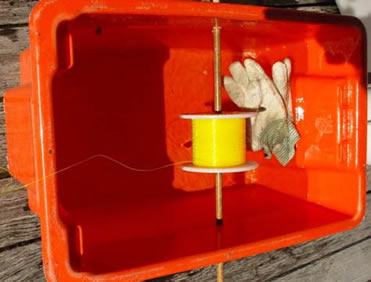
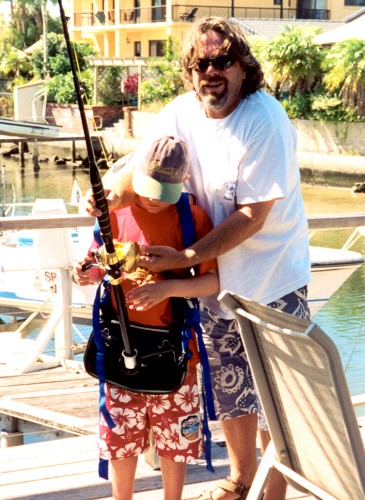 To get the line on the spool correctly, pressure has to be applied to it. The amount of pressure depends on what type of line you're spooling up. The less stretch in the line the more pressure needed. For example, Dacron needs more pressure than nylon, Spectra needs more than Dacron. In all instances, apply as much pressure as possible, at least over the expected drag setting you'll be fighting fish with, which can be over 60% of the line class. If the line is not put on tightly it may dig in underneath other coils and jam. Even if it only digs in slightly, it will burn the line, and weaken it significantly.
To get the line on the spool correctly, pressure has to be applied to it. The amount of pressure depends on what type of line you're spooling up. The less stretch in the line the more pressure needed. For example, Dacron needs more pressure than nylon, Spectra needs more than Dacron. In all instances, apply as much pressure as possible, at least over the expected drag setting you'll be fighting fish with, which can be over 60% of the line class. If the line is not put on tightly it may dig in underneath other coils and jam. Even if it only digs in slightly, it will burn the line, and weaken it significantly.